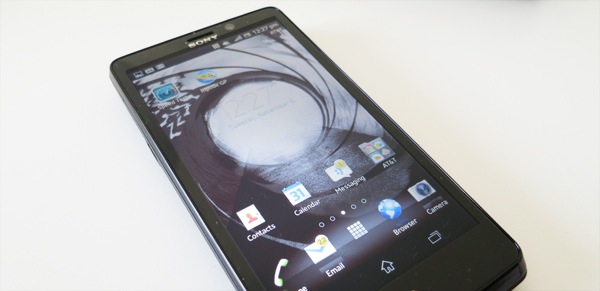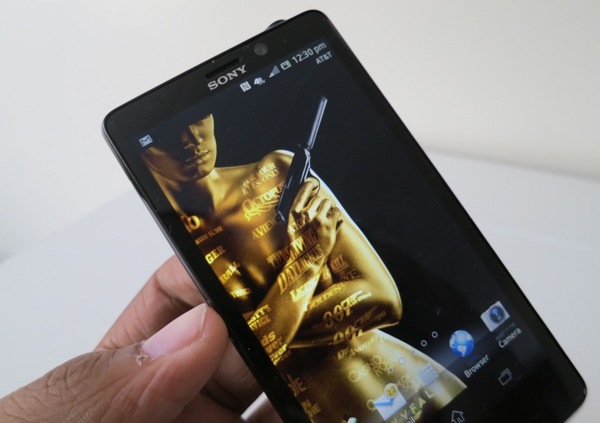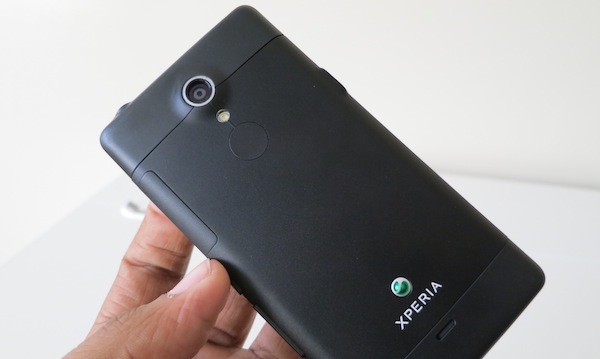The Sony Xperia TL is the latest in a long line of attempts by Sony to produce the phone that fits comfortably in a smartphone world dominated by Android. Since the company embraced Android with the Xperia X10, it has released an endless flow of devices that have been greeted with excited praise for its hardware prowess and bitter disappointment for its software frustrations.
Each iteration of Sony's flagship device has improved and been better than the previous version, but no single attempt has been just right. The Xperia TL, available now on AT&T, is as close as the company has come to finding the smartphone sweet spot, but is that good enough to compete with other Android manufacturers with a better track record? Is it good enough to compete with the best from Apple or Windows Phone 8 entrants?
James Bond seems to think so. The Sony Xperia TL gets quite a bit of product placement in the latest Bond flick, Skyfall, popping up as Britain's greatest fictional spy goes on secret missions to save the world and get the girl. If it's good enough for the world's most debonair spy, surely the Xperia TL is good enough for the average gentleman or lady, right? Read on to find out.
Hardware
Regardless of what anyone might say about Sony's track record of delivering timely firmware upgrades, the company can hardly be faulted for its hardware choices. Sony has a knack for designing phones that look as incredible as they feel. The Sony Xperia TL is no exception to that trait. In fact, it's Exhibit A for anyone who wants to make a case for Sony being home to one the best team of designers in the phone industry. It makes sense that this would be the "Bond phone" because the Xperia TL embodies several of the characteristics that have come to define the Bond character: slender, nimble, strong, and handsome.

The Sony Xperia TL measures 9.35mm (0.4in) thin, but the phone feels even thinner because of a rear curvature that nestles inside the user's palm. The back of the device has rounded edges that stop suddenly and meet the front edges of the phone that slant inward. Aesthetically, the Xperia TL is a more imposing version of the Xperia Arc. The frame is 129.4mm x 67.3mm (5.09in x 2.65in) and feels tougher than its predecessor. The phone is pleasing to touch because the back is treated with an aluminum finishing that gives the phone an interesting texture that is neither smooth nor rough. The main portion of the phone is anodized aluminum, which better resists scratches and makes the phone feel cool and at ease in the hand.
Above the anodized aluminum, the Xperia TL is anchored by matte material, as well as a distinctive 13 megapixel camera and LED flash towards the top of the device. Below the flash is a circle outline that acts as a guide to where the phone should be placed when using its built-in NFC chip. Though Sony chose to use a Frankenstein-like mishmash of materials, the components are complementary rather than clashing.
Button placement unfortunately makes less sense. The Xperia TL inexplicably has the power and volume buttons toward the lower portion of the phone, so the buttons are covered by the user's palm when held in normal position. Should someone who is right-handed feel the need to raise or lower the volume, that person would have to tilt the phone back and awkwardly move towards the volume up or down buttons. Sony also changed the positioning of ports, putting an MHL-enabled USB charging port on the top left side, and slots for the SIM card and up to 32GB microSD cards on the right. Sony could have just as easily placed those ports on the bottom in favor of more natural positions for the power and volume buttons.

The Xperia TL features a 4.55-inch LCD display with Sony's Mobile Bravia Engine. The 720x1280 resolution has 323ppi, so text renders much smoother than seen on lesser displays. The Bravia Engine is designed to offer real-time adjustments to color saturation and brightness settings to deliver a more vivid display. For the most part, that works well when browsing in the gallery or viewing locally-stored HD videos.
Bravia has no effect in standard browsing, which is unfortunate because the screen appears too bright, almost as if a layer of white with low opacity is placed over the screen. The vividness and deep color displays managed in videos sadly don't provide any real benefit to the home screen or standard apps, so it wouldn't be a surprise if some users choose to disable Mobile Bravia and use the standard display settings.
Usability
Sony offers buyers a good news, bad news situation with the Xperia TL. The good news is that the phone looks incredible and has plenty of great features, but the bad news is that the phone sometimes forgets that it's a premium device and doesn't showcase those stellar traits. A prime example of that tragic flaw comes when looking at the software version number shipping with the Xperia TL - Android 4.0 Ice Cream Sandwich. Android 4.1 Jelly Bean may only be on a fraction of Android devices, but there's really no reason for the Xperia TL to not contribute to raising that number higher considering that Jelly Bean debuted five months before its release.

The Xperia TL suffers because of the decision to run Android 4.0. Despite 1GB of RAM and a 1.5 GHz dual-core processor that statistically does well, the lack of the Android 4.1 buffering and speed optimizations make for a less impressive performance. Granted we're discussing a difference of milliseconds, but there are other moments of slow switching between apps and random stutters.
One can't help but wonder how much quicker the transitions would be or how fewer pauses there might be if the phone shipped with more up-to-date software. Aside from the speed differences, many of the great Jelly Bean features - not to mention the new advancements made in the just released Android 4.2 - will not make their way to this phone for several month, if they arrive at all. Sony has not made any public statements about its intention to run Jelly Bean, so consumers must judge the device as is.
As it stands, the Xperia TL is usable and enjoyable despite its comparative shortcomings. The Xperia user interface has been refined to be slimmer and more adaptive, allowing users to theme the home screen or take advantage of clever adjustments made to standard Android software. Pressing the multitasking button will open a list of recently used apps that the user can swipe to close or tap to open.

It also has shortcuts to useful "Small apps" that can hover over any open window and be used without exiting an open app. The Xperia UI can support using a calculator, timer, note, or voice record over a browser or any other app, allowing for more powerful multitasking. Sony has built in the ability to add more Small apps from the Play Store, so more tools may be added in the future.
Sony has altered Android to include a bit more flair than what's seen in the standard version of Android without adding as much gloss or garish design changes like some other manufacturers have done. The calendar integrates with Facebook to show friends' birthdays and events, and has tabs to quickly switch between Month, Week, and Day views. While Sony also beautified the Calculator and Messaging apps, it's best contributions are the stellar media app alternatives. Album is a replacement Gallery app that is fast and well organized, grouping pictures and videos according to date. It also has tabs for geo-tagged images; online photos, including Facebook albums; and an editor that includes the standard filters and effects found in Android 4.0.

Smart Connect can be used to create a few conditional operations, such as automatically launching the Walkman app when headphones are plugged into the phone. It's also where users can manage SmartTags, Sony's custom NFC tags that can also be used to trigger actions on the phone. A SmartTag sticker can be programmed to switch to vibrate when the Xperia TL is placed on top of it, or turn on Bluetooth and GPS when the phone is placed on a car dashboard. The tags, which are sold at AT&T stores in packs of four, provide added use of NFC beyond the mobile payments typically associated with the technology.
Calling / Data
Phone calls on the Xperia TL aren't as crystal clear as some phones with enhanced audio, but there are no call quality issues. Both parties on the phone were clearly audible during my testing of the Xperia TL. The phone also accesses AT&T's 4G LTE or HSPA+ networks in areas where either form of 4G is available. Despite AT&T's network being strained in the aftermath of Hurricane Sandy, the device consistently managed speeds of 10 to 14 Mbps downloads and 2.5 to 3 Mbps uploads. LTE availability and performance will vary by market.


